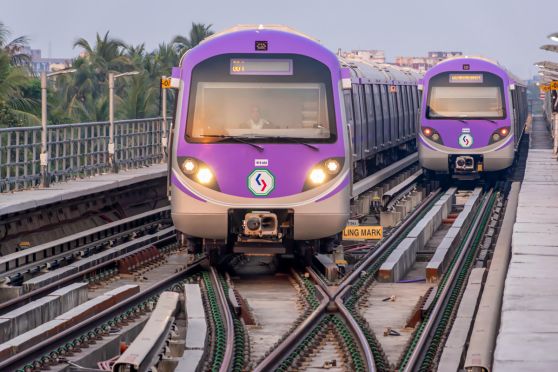An upgrade of the third rail in a stretch of the north-south or Blue line of Metro Rail, one of the oldest corridors, to save energy and equip itself to run trains at shorter intervals, completed its first breakthrough on Sunday.
A 70m section that covers Central station saw the steel third rail replaced with
aluminium.
The third rail provides power to the trains. The existing third rail, made of steel, is being replaced with one made of aluminium, in phases.
“Aluminium is a much better electricity conductor than steel. Aluminium third rail will reduce the system voltage drops and subsequent energy losses. Fewer voltage drops will help in achieving faster acceleration of trains,” said a Metro official.
“The work at Central station was the first big step. We want to complete the upgrade across the entire Blue Line in two years,” said the official.
The replacement work at Central station started around 11.30pm on Saturday. It was over by 4am. Commercial services started at the usual time.
“The replacement work was extremely critical and demanding as delay in completion of work might lead to traffic disruption the next morning. So, all steps were monitored critically,” said the Metro spokesperson.
The north-south Metro corridor of Blue Line is 34km long.
“The railway ministry sanctioned ₹113 crore in 2022-23 to replace the steel third rail in the 34km stretch,” said the Metro spokesperson.
Metros in London, Munich, Moscow, Istanbul and multiple other cities have aluminium third rail, said a Metro official. The preparatory work started at Girish Park and Maidan yards in September.
The main component, shipped from Hamburg in Germany, arrived in Calcutta in the last week of July.
Now, the interval between two trains during rush hours is around five minutes. When the entire 34km stretch of the Blue Line has an aluminium third rail, the carrier will be one step closer to achieving a rush-hour frequency of two-and-a-half minutes.











